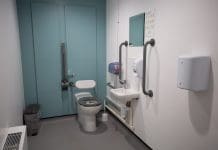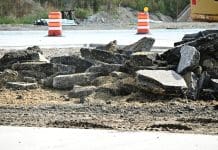The primary care estate requires a plan for the future where we ‘don’t forget the building’ argues Karl Redmond and Gary Shuckford. Here they highlight the professional guidance available
Our healthcare services are undergoing significant change, and while healthcare professionals are frantically busy delivering care to patients, it’s easy to forget that our primary care estate infrastructure needs a plan for care too.
Strategies to deal with the care programs are seen with the introduction of Vanguards and STPs. The cost and benefit of transformation is notable in the acute sector, because of the cost of running our hospitals (Shuckford, Redmond & Gorse, July 2017) along with the growing, shifting and changing demographic. The primary care estate will also have to undergo significant change over the next decade if it wishes to continue to offer first class patient care in community settings.
The General Practice Forward View and General Practice Development Programme, backed with a significant funding programme, aims to increase our primary care capacity. While commendable, it’s a challenging programme of change. While a lot of effort and focus is upon service transformation, directing patients to other healthcare professionals such as nurses and community pharmacists, very few have considered the impact of the buildings that care is delivered from. This is particularly important with an increase in practice mergers and acquisitions and the development of hub and spoke type premises to deliver extended hours care and additional services.
Why is ‘the building’ important for the primary care estate?
The building is likely to be a GP’s most important and valuable asset; its value, its condition, its capacity, its ability to meet the demands of evolving services and models of care makes a strong understanding of the building a very important consideration. In the not too distant future, the importance of buildings may be further complicated by the need to be compliant. It is likely that the premises compliance requirements for the delivery of Acute services will be extended to include a wider range of healthcare services, especially with an increasing number of services being delivered within primary care. One example is the Premises Assurance Model (PAM). The PAM compliance tool has previously been considered for extension into primary care assets and was expected to be introduced in 2016. However, if GP’s continue to take on/away services from the Acute Providers, then a level playing field regarding ‘the building’ housing such services will need to be in place to ensure buildings are fit for purpose and clinically compliant for specific clinical services.
Even with more modern “hub” type premises, for example, those that aspire to house multiple practices and support services, we have found issues with access at different times of the day. Specifically, if a lift is broken, some patients struggle to access the upstairs consulting rooms, the layout/location of reception means opening the whole downstairs just to run an extended hours clinic or weekend physio service. This leads to another consideration for ‘the building’ of maximising operational efficiency for patient flow as well as for physical asset performance e.g. energy and proactive maintenance. The widely acknowledged ‘total cost of ownership’ for any asset is mainly operational – c85% – the rest is in the design and build. It is clinically sensible and logical to design healthcare service delivery around the patient, but ‘don’t forget the building’ as this would be naïve and could be commercially a costly mistake (short and long term) in a market that is changing rapidly.
Karl Redmond worked with high-calibre partners and collaborators in the application of the Smart Asset Management program in a healthcare setting, supported through the Internet of Things (IoT), which has been developed to help improve, as well as link the physical running and performance of any asset with clinical, operational throughput.
Practice mergers or acquisitions and property considerations
Practice mergers or acquisitions are occurring more often, led either by practices themselves or federations. We’ve also seen the beginning of “super practices” with large list sizes. The lease arrangements need to be considered in discussions, early on, to maximise the value of the existing asset(s) and to ensure that future buildings are in the right place, and able to deliver the range of services as they evolve to meet evolving patient needs. Designing and building a flexible, adaptable and compliant building that carries a degree of future proofing, clinically and commercially, giving GPs the chance to change their healthcare delivery services to suit/cater for various demographic demands, needs serious consideration. The physical asset should not be a secondary consideration; it is a short and long-term investment that requires insightful and viable solutions that fit with a range of internal and external drivers.
The planning work that needs to be carried out to ensure the right facility is being built to meet the needs of the area/population can be articulated. We learn how to plan by understanding the current benchmark, physical and clinical, and the consequential impact on patients, which highlights the inability to react quickly enough to changing demographics or to develop flexible assets that may help with future proofing of investments made in physical infrastructure. The introduction of systems and holistic thinking methodologies can have a positive impact on the planning process and help deal with existing, stuttering clinical scenarios developing across the country.
Existing infrastructure and funding
Regarding the existing asset base, compliance and statutory requirements for delivering healthcare services are, and will always be, important. However, with ageing buildings that constantly need repair and energy costs increasing, seemingly monthly, it is time to consider how well your building is performing. This should include health and safety compliance but also size, capability, capacity, risks, potential future liabilities, contractual obligations and how or if to invest further. The information required to make an informed decision regarding the usefulness of ‘the building’ is available but it needs gathering, understanding and then disseminating to reach the most appropriate course of action for the practice, operators, clinicians, workers and above all, patients.
To support the development of general practice, don’t forget the value that a wide range of companies and services can offer, supporting the design of new and refurbished healthcare premises. There is more and more information available to help with estates planning, such as Edenbridge Apex; an IT tool which shows current and forecasts primary care demand and capacity to help align services and location to patient demand. Federated working and technology is also evolving to support a more collaborative approach with neighbouring practices, to maximise the use of existing buildings and services.
The future is one of change, with multiple challenges, you can stay ahead by looking at the benchmark, as outlined above and planning for the future. There are groups and individuals willing and able to help and share knowledge and offer advice. After all, we are all patients or will be at some stage. Can we make certain we care for everyone in an environment ‘fit for purpose’ now and in the future? So ‘don’t forget the building.’ ■
. . . . . . . . . . . . . . . . . . . . . . . . . . . . . . . . . . . . . . . . . . . . . . .
Karl Redmond
LinkedIn: Karl Redmond
Gary Shuckford
LinkedIn: Gary Shuckford






![[VIDEO] Two key HS2 viaducts completed over Christmas Image of the two HS2 viaducts completed over Christmas](https://www.pbctoday.co.uk/news/wp-content/uploads/2026/01/20251227_HS2-Water-Orton-1-and-2-viaducts-over-the-Birmingham-to-Nuneaton-line-27-218x150.jpg)







